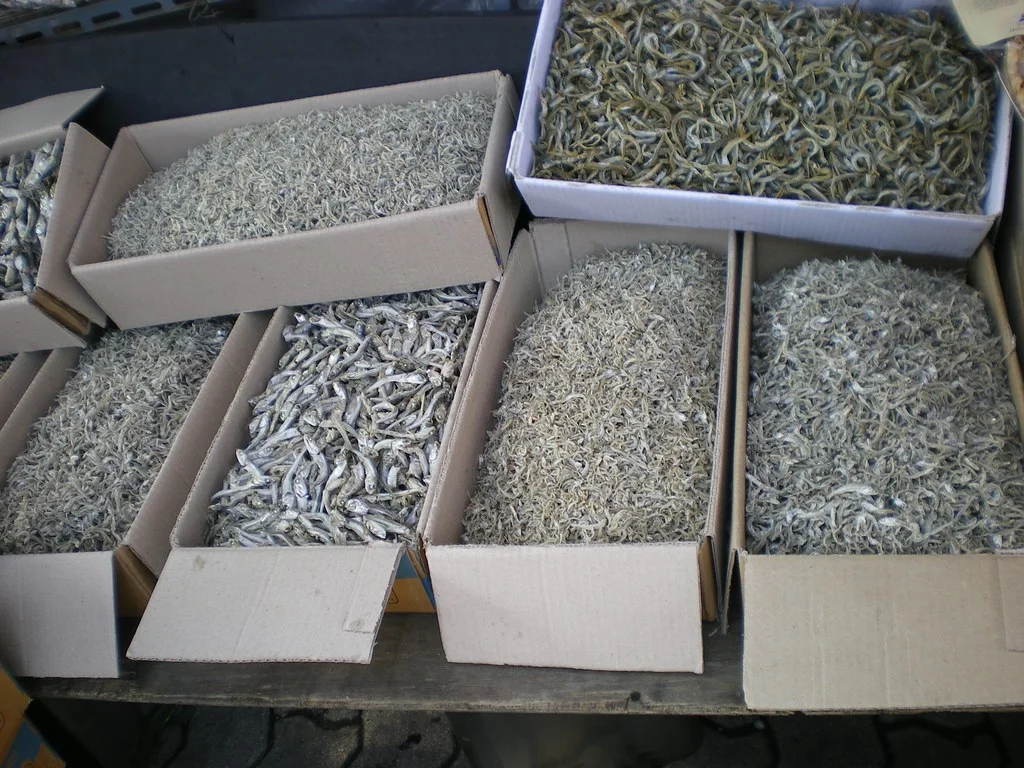In a Nutshell:
- Shelf life: 2+ years unopened, 6-12 months opened
- Spoilage signs: sour smell, mold, discolored appearance
- Storage: store in a cool, dry place, and refrigerate after opening
So you just got yourself a tube of that deliciously savory anchovy paste, and now you’re wondering how long it’ll last before it goes bad? Fear not, fellow anchovy enthusiast!
We’re here to guide you through the ins and outs of preserving that tasty tube of fermented fish goodness.
In this article, we’ll dive into how long anchovy paste is good for, teach you how to spot spoilage, and share tips on the best storage methods to keep it fresh for all your pasta sauce and seafood seasoning adventures.
Let’s jump right in.

Table of Contents
- How Long Does Anchovy Paste Last?
- What Affects Anchovy Paste Shelf Life?
- How to Tell if Anchovy Paste is Bad?
- When Change is Okay: Don’t Panic!
- Does Anchovy Paste Need to Be Refrigerated?
- How to Store Anchovy Paste
How Long Does Anchovy Paste Last?
If you’re wondering how long anchovy paste lasts, you’re not alone.
Unopened anchovy paste lasts 2+ years, easily retaining quality beyond the date printed on the tube. After opening, the paste typically stays fresh for about a year if you keep it sealed tightly and refrigerate it.
Now, let’s dive deeper into the details!
Unopened Anchovy Paste
When it comes to unopened anchovy paste, it’s quite the long-lasting condiment – similar to its culinary cousins, oyster sauce and fish sauce.
As long as the seal remains intact and you store it in a cool, dry place, it will stay safe for months past the expiration date, though the quality might slightly deteriorate during that period.
In other words, as long as the paste isn’t a couple of years beyond the “expiration date,” open it up and check it against the spoilage signs (that I cover later in the article) before using. Relying solely on the expiration date for such a long-lasting product doesn’t make much sense.

Opened Anchovy Paste
Once you crack open that tube, the shelf life of anchovy paste becomes more like that of hoisin sauce or teriyaki sauce – about 6 to 12 months for the best quality. And make sure to refrigerate the leftover anchovy paste to keep it at its freshest.
Much like other condiments such as barbecue sauce, the key to maintaining freshness is proper storage and refrigeration.
What Affects Anchovy Paste Shelf Life?
Quality of Ingredients and Packaging
Just as the quality of balsamic vinegar or Dijon mustard affects their shelf life, the freshness and quality of anchovy fillets and olive oil in the paste can impact how long the anchovy paste lasts.
In addition, the packaging plays a crucial role. Airtight tubes are your best bet if you’re only using a bit of the paste at a time, say when marinating meat or making that Caesar salad.
(Tubes also help tomato paste last longer.)
Storage Conditions
Storage conditions can significantly affect how long anchovy paste retains quality. Keeping your anchovy paste in a cool, dry place away from direct sunlight helps maintain its freshness.

Exposure to Air and Moisture
When you open the anchovy paste, exposure to air and moisture can speed up spoilage. It’s like when you open a jar of mayonnaise, ketchup, or hot sauce – the more you expose it to air, the faster it deteriorates in quality.
To minimize this, squeeze out as much air as possible before sealing the tube or container.
Alright, now that we’ve got the storage time of anchovy paste covered, let’s move on to spotting those telltale spoilage signs. After all, nobody wants to mistakenly use expired anchovy paste in their pizza toppings or salad dressing.
How to Tell if Anchovy Paste is Bad?
Here’s a quick answer: check for a sour or off odor, mold, or discolored appearance. If the paste looks and smells okay, taste it to make sure the quality is okay, and there are no off-flavors.
Now, let’s dive deeper into each sign of spoilage!
Mold
If you spot mold growing in your tube or jar of anchovy paste, it’s definitely time to say goodbye. Just like with Hoisin sauce, any visible mold indicates spoilage and is a sign that your paste is not safe to eat anymore.
Sour or Off Odor: Trust Your Nose
If your anchovy paste has gone bad, you might notice an unpleasant, sour smell, similar to what you’d experience with spoiled Worcestershire sauce. This off odor is a surefire sign that your anchovy paste doesn’t taste good anymore, and it’s time to toss it.
Discoloration
Lastly, if your anchovy paste changes color or becomes noticeably darker, it’s a clear indicator that it’s past its prime. It might not cause food poisoning, but it’s probably better to discard it and open a new one.
Now that we know how to identify bad anchovy paste, let’s discuss some changes that might look concerning but are actually perfectly fine!
When Change is Okay: Don’t Panic!
Separation: Just Give It a Stir
If you notice some oil separation in your anchovy paste, don’t worry! This is a natural occurrence, just like when you see separation in chimichurri sauce or cocktail sauce.
Simply give it a good stir to mix the ingredients back together, and your anchovy paste is ready for your sandwich spread or any other culinary creation.
White Substance Around the Fish
If there’s some white substance in the can that’s not mold, chances are it’s salt, and that’s perfectly fine. As usual, if you’re not quite sure whether it’s mold (which should look fuzzy) or salt, assume it’s the former and toss the condiment.
A Puffed Can Might be Okay
As you probably know, a swollen can is a typical sign that canned food is no longer safe to eat. Well, in the case of canned anchovy paste, that’s not always the case.
The Crown Prince brands inform that the cans of their anchovy paste might puff, and that’s normal and expected if the can is stored at a relatively high temperature. Furthermore, puffing is caused by non-harmful bacteria that produce gas, so it’s not a sign your anchovy paste has gone bad.
Okay, but how can you tell between a puffed can that’s okay and one that isn’t?
Unfortunately, there isn’t a good way to do this. You can, of course, sniff and check the contents of the can after opening it, but that’s far from ideal.
The best suggestion I can give you here is to make sure the can sits in a cool and dark place so that it doesn’t puff in the first place.
So there you have it – the key signs of spoilage in anchovy paste and the changes that might seem concerning but are actually no big deal.
Next up, let’s make sure your anchovy paste is stored properly.
Does Anchovy Paste Need to Be Refrigerated?
Unopened anchovy paste doesn’t need refrigeration – a cool and dark place is good enough. But once you open the can or tube, it’s best to keep the condiment in the fridge. Leaving it at room temperature will only speed up quality deterioration,
Now that we know where to store anchovy paste, let’s discuss how to do it properly.
How to Store Anchovy Paste
Storing anchovy paste properly is crucial to maintaining its quality and flavor. Here are some tips to ensure your fish-based spread stays fresh for as long as possible.
Cool and Dark Place Away From Direct Sunlight
Like soy sauce or rice vinegar, anchovy paste can be stored in a cool, dark place away from direct sunlight. This will keep it fresh until you’re ready to open it and unleash its umami-packed goodness.
Keep It Sealed
Whether it’s a tube or jar, make sure to close the anchovy paste container tightly after each use. An airtight seal helps keep air and moisture out, which can spoil your paste over time.
Refrigerate After Opening
As mentioned earlier, once opened, anchovy paste should be stored in the refrigerator. This helps slow down any potential spoilage and keeps your paste fresher for longer.
Minimize Air Exposure: Squeeze It Out
When using a tube of anchovy paste, try to squeeze out as much air as possible before sealing it. This will minimize the amount of air inside the tube, helping to maintain the paste’s freshness and flavor.